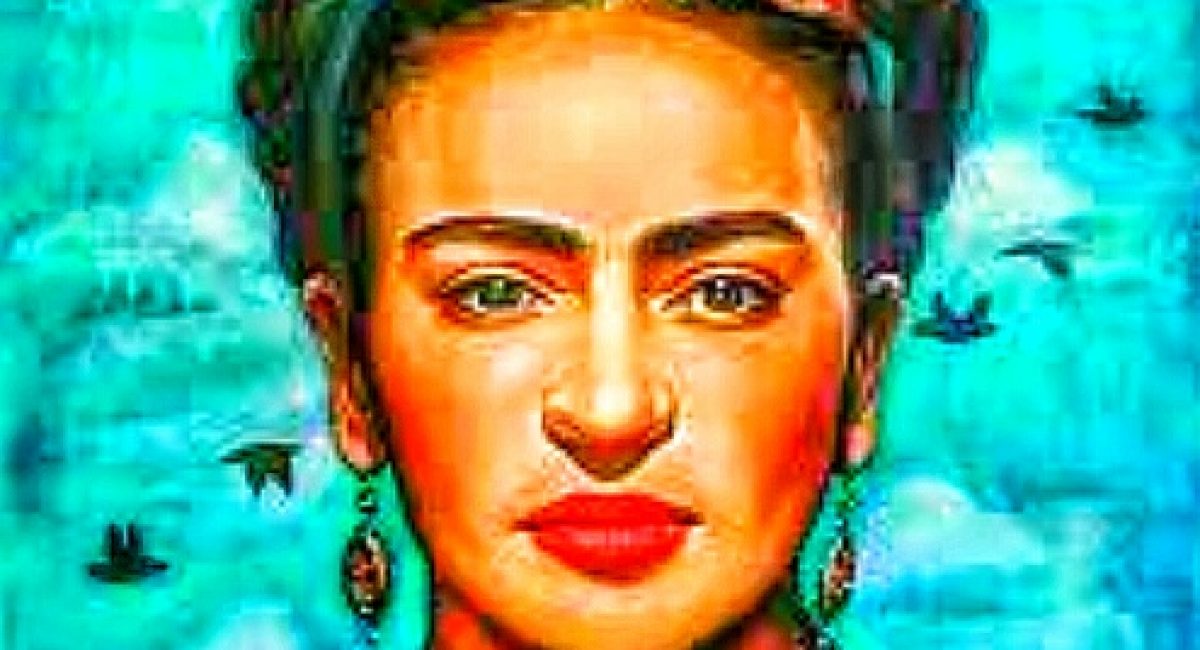“FRIDA”
THE ARTIST OF PAIN AND PASSION

By Nevin Ulusoy
“FRIDA” – THE ARTIST OF PAIN AND PASSION
Frida Kahlo. The Surrealist, Mexican artist. One of the most loved figures of popular culture. Her face is with us on notebooks, bags, her quotations can be seen all around the net, popular magazines. When we look at her in the eyes, she asks us to gaze more intently and start talking to our hearts. “Frida”, 2002 film about her life and career is a perfect struggle of penetrating her in every aspect, the result of the tale in her eyes and intense sentences.
“Frida” is based on Hayde Herrera’s book “Frida: A Biography of Frida Kahlo”. It is directed by Julie Taymor and her success can be noticed in every scene of the film, making us feel Frida’s atmosphere in every second. Salma Hayek looks like real Frida, actually she is Frida, in every look, every movement, every talk. We have Alfred Malina as Diego Rivera, Frida’s never-ending, troubled love, husband, lecturer. The film won two academy awards, for Best Makeup and Best Music, Original Score. Salma Hayek was nominated for the Academy Award.
The living sculpture of pain,sorrow and the artist who could reflect her enormous pain, the pain that dyed all her life, into her art, her stunning pictures, unbelievable self-portraits. Her love of freedom in every aspect of life directed her life.
The film starts with her youth, as she attends the academy with her boyfriend, such an enthusiastic girl, full of life, passion and an unbelievable desire for painting. She admires Dioga so much, watches him painting secretly. Then the accident, the accident that changes the course of her life, but nothing is powerful enough to stop her, to strangle her passion. The embodiment of passion, passion for life, learning and love. The living sculpture of pain, sorrow and the artist who could reflect her enormous pain, the pain that dyed all her life, into her art, her stunning pictures, unbelievable self-portraits. Her love of freedom in every aspect of life directed her life. Her strength of soul was so immense, she could survive through unimaginable physical and spiritual suffering. The scene of her wedding, one of the most memorable parts of the film, makes us believe that there will be no more suffering for her and their mutual friend’s speech on marriage, saying that marriage is an institution to enslave women actually, but people like Frida and Diego could give it a try out of love. But her marriage only helped to increase her pain, as she expresses: “There have been two great accidents in my life. One was the train, the other was Diego. Diego was by far the worst.” We have some of her brilliant pictures like “Frida and Diego Rivera” (1931), “The Two Fridas” (1939), “The Broken Column” (1949). Her way of looking at life can be seen in these words:” Feet, what do I need them for if I have wings to fly.”


Having wandered in her house online, it has been a fascinating experience for me to watch the film, see her living, painting working in that house, walking in that garden. Frida directly addresses us with her work and life, to the people who look for themselves in the depths of the universe and their hearts, “The Wanderer”s as in the song of Amorphis. The song of the film “Burn it Blue” by Caetano Veloso and Lila Downs give us the mood of her last suffering: “I hope the exit is joyful and I hope never to return.” The song was nominated for the Best Music, Original Song.
